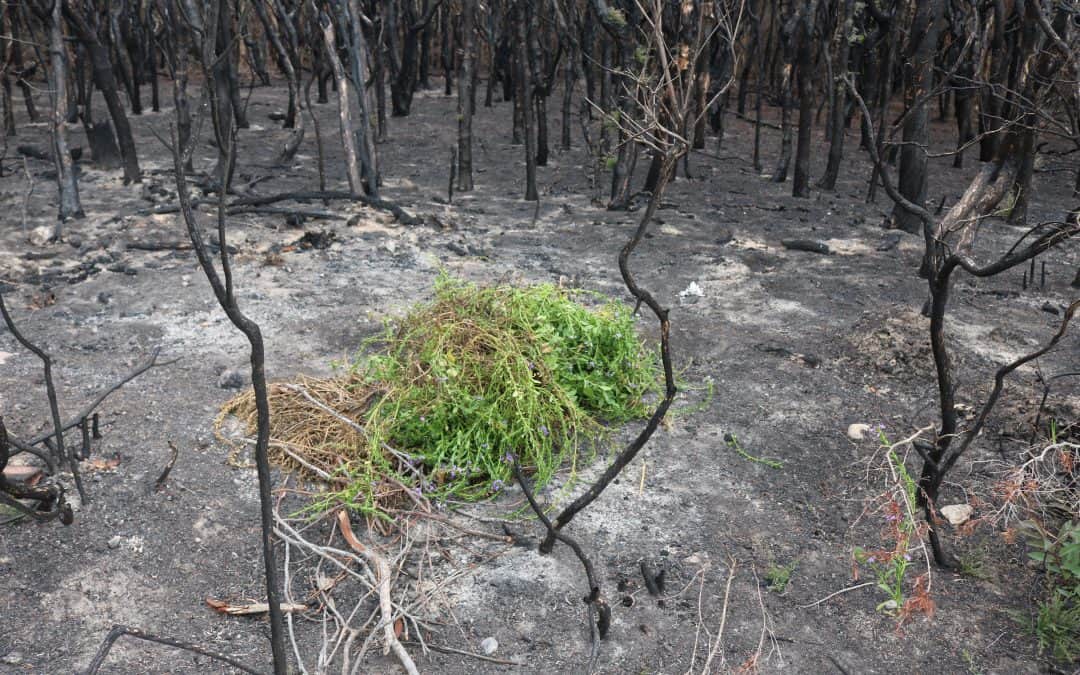We are putting together some resource pages on plants and fire after the devastating 2019/20 Australian bushfires. Find out how plants and ecological communities recover from fire and what we can all do to help, including not dumping garden waste in burnt areas like the photo below. Help us get the word out there! Weeds are one of the biggest threats to plant recovery at this time. Read more.
- Stay out of recently burnt areas until it is safe – trees and branches may continue to fall for days, weeks and months after the fire has passed.
- When it’s safe to go in the bush, assess the site. Keep to formed tracks and do not walk in areas where plants are regrowing and seedlings emerging as this can damage their recovery and lead to soil erosion.
- In the short, medium and long term, carefully assess biodiversity loss and natural plant recovery after the fires, as some species may disappear, but many have mechanisms to cope with fire. Use standardised monitoring techniques so different sites can be compared.
- Identify threats to plant recovery such as weeds, grazers and disease.
- Use the assessment results to develop a restoration plan. Implement your plan, keep good records about what you do, monitor your site to determine the effectiveness of any restoration actions.
- Prioritise assisted natural regeneration actions where necessary within burnt bushland, and at its edges and in unburnt refugia, to control feral predators, herbivores and invasive plants. Planting is rarely needed.
- Work with others – join a local bushcare volunteer group, call your local council or local land/catchment management group, collaborate with your local university, join local and national networks.
- Learn, communicate. Attending training courses, talk to others in your area, read books, apply for funding if you need assistance. Share your information with others.
- Continue to protect burnt areas, as they need time to recover, and unburnt areas too, as these may act as refuges for biodiversity – from which species can repopulate burnt areas.
- Don’t plant or seed into burnt and naturally regenerating areas in the period immediately after the fire – wait to see what regenerates in the medium to long term and seek expert advice, before deciding what interventions are needed.
- Don’t collect seeds in burnt areas
- Don’t take too much seed from unburnt areas.
- Don’t clear “dead” plants which may resprout and provide shelter for remaining wildlife.
- Don’t dump garden waste or other organic material in the burnt areas. This can do more harm than good

